The Jargon File by Eric S. Raymond (ebook reader android txt) 📕
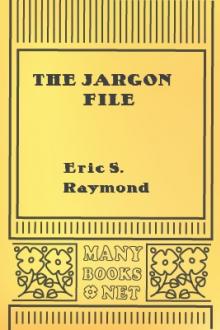
- Author: Eric S. Raymond
- Performer: -
Book online «The Jargon File by Eric S. Raymond (ebook reader android txt) 📕». Author Eric S. Raymond
Up:[2545]= C =
channel n.
[IRC] The basic unit of discussion on [2546]IRC. Once one joins a
channel, everything one types is read by others on that channel.
Channels are named with strings that begin with a `#' sign and can
have topic descriptions (which are generally irrelevant to the actual
subject of discussion). Some notable channels are #initgame, #hottub,
callahans, and #report. At times of international crisis, #report has
hundreds of members, some of whom take turns listening to various news
services and typing in summaries of the news, or in some cases, giving
first-hand accounts of the action (e.g., Scud missile attacks in Tel
Aviv during the Gulf War in 1991).
Node:channel hopping, Next:[2547]channel op, Previous:[2548]channel,
Up:[2549]= C =
channel hopping n.
[common; IRC, GEnie] To rapidly switch channels on [2550]IRC, or a
GEnie chat board, just as a social butterfly might hop from one group
to another at a party. This term may derive from the TV watcher's
idiom, `channel surfing'.
Node:channel op, Next:[2551]chanop, Previous:[2552]channel hopping,
Up:[2553]= C =
channel op /chan'l op/ n.
[IRC] Someone who is endowed with privileges on a particular [2554]IRC
channel; commonly abbreviated chanop' orCHOP' or just `op' (as of
2000 these short forms have almost crowded out the parent usage).
These privileges include the right to [2555]kick users, to change
various status bits, and to make others into CHOPs.
Node:chanop, Next:[2556]char, Previous:[2557]channel op, Up:[2558]= C
=
chanop /chan'-op/ n.
[IRC] See [2559]channel op.
Node:char, Next:[2560]charityware, Previous:[2561]chanop, Up:[2562]= C
=
char /keir/ or /char/; rarely, /kar/ n.
Shorthand for character'. Esp. used by C programmers, aschar' is
C's typename for character data.
Node:charityware, Next:[2563]chase pointers, Previous:[2564]char,
Up:[2565]= C =
charityware /cha'rit-ee-weir`/ n.
Syn. [2566]careware.
Node:chase pointers, Next:[2567]chawmp, Previous:[2568]charityware,
Up:[2569]= C =
chase pointers
vi. To go through multiple levels of indirection, as in traversinga linked list or graph structure. Used esp. by programmers in C, where
explicit pointers are a very common data type. This is techspeak, but
it remains jargon when used of human networks. "I'm chasing pointers.
Bob said you could tell me who to talk to about...." See
[2570]dangling pointer and [2571]snap. 2. [Cambridge] `pointer chase'
or `pointer hunt': The process of going through a [2572]core dump
(sense 1), interactively or on a large piece of paper printed with hex
[2573]runes, following dynamic data-structures. Used only in a
debugging context.
Node:chawmp, Next:[2574]check, Previous:[2575]chase pointers,
Up:[2576]= C =
chawmp n.
[University of Florida] 16 or 18 bits (half of a machine word). This
term was used by FORTH hackers during the late 1970s/early 1980s; it
is said to have been archaic then, and may now be obsolete. It was
coined in revolt against the promiscuous use of `word' for anything
between 16 and 32 bits; `word' has an additional special meaning for
FORTH hacks that made the overloading intolerable. For similar
reasons, /gaw'bl/ (spelled gawble' or possiblygawbul') was in use
as a term for 32 or 48 bits (presumably a full machine word, but our
sources are unclear on this). These terms are more easily understood
if one thinks of them as faithful phonetic spellings of `chomp' and
`gobble' pronounced in a Florida or other Southern U.S. dialect. For
general discussion of similar terms, see [2577]nybble.
Node:check, Next:[2578]cheerfully, Previous:[2579]chawmp, Up:[2580]= C
=
check n.
A hardware-detected error condition, most commonly used to refer to
actual hardware failures rather than software-induced traps. E.g., a
`parity check' is the result of a hardware-detected parity error.
Recorded here because the word often humorously extended to
non-technical problems. For example, the term `child check' has been
used to refer to the problems caused by a small child who is curious
to know what happens when s/he presses all the cute buttons on a
computer's console (of course, this particular problem could have been
prevented with [2581]molly-guards).
Node:cheerfully, Next:[2582]chemist, Previous:[2583]check, Up:[2584]=
C =
cheerfully adv.
See [2585]happily.
Node:chemist, Next:[2586]Chernobyl chicken, Previous:[2587]cheerfully,
Up:[2588]= C =
chemist n.
[Cambridge] Someone who wastes computer time on [2589]number-crunching
when you'd far rather the machine were doing something more
productive, such as working out anagrams of your name or printing
Snoopy calendars or running [2590]life patterns. May or may not refer
to someone who actually studies chemistry.
Node:Chernobyl chicken, Next:[2591]Chernobyl packet,
Previous:[2592]chemist, Up:[2593]= C =
Chernobyl chicken n.
See [2594]laser chicken.
Node:Chernobyl packet, Next:[2595]chicken head,
Previous:[2596]Chernobyl chicken, Up:[2597]= C =
Chernobyl packet /cher-noh'bl pak't/ n.
A network packet that induces a [2598]broadcast storm and/or
[2599]network meltdown, in memory of the April 1986 nuclear accident
at Chernobyl in Ukraine. The typical scenario involves an IP Ethernet
datagram that passes through a gateway with both source and
destination Ether and IP address set as the respective broadcast
addresses for the subnetworks being gated between. Compare
[2600]Christmas tree packet.
Node:chicken head, Next:[2601]chiclet keyboard,
Previous:[2602]Chernobyl packet, Up:[2603]= C =
chicken head n.
[Commodore] The Commodore Business Machines logo, which strongly
resembles a poultry part (within Commodore itself the logo was always
called chicken lips'). Rendered in ASCII asC='. With the arguable
exception of the Amiga (see [2604]amoeba), Commodore's machines were
notoriously crocky little [2605]bitty boxes (see also [2606]PETSCII),
albeit people have written multitasking Unix-like operating systems
with TCP/IP networking for them. Thus, this usage may owe something to
Philip K. Dick's novel "Do Androids Dream of Electric Sheep?" (the
basis for the movie "Blade Runner"; the novel is now sold under that
title), in which a `chickenhead' is a mutant with below-average
intelligence.
Node:chiclet keyboard, Next:[2607]Chinese Army technique,
Previous:[2608]chicken head, Up:[2609]= C =
chiclet keyboard n.
A keyboard with a small, flat rectangular or lozenge-shaped rubber or
plastic keys that look like pieces of chewing gum. (Chiclets is the
brand name of a variety of chewing gum that does in fact resemble the
keys of chiclet keyboards.) Used esp. to describe the original IBM
PCjr keyboard. Vendors unanimously liked these because they were
cheap, and a lot of early portable and laptop products got launched
using them. Customers rejected the idea with almost equal unanimity,
and chiclets are not often seen on anything larger than a digital
watch any more.
Node:Chinese Army technique, Next:[2610]choad, Previous:[2611]chiclet
keyboard, Up:[2612]= C =
Chinese Army technique n.
Syn. [2613]Mongolian Hordes technique.
Node:choad, Next:[2614]choke, Previous:[2615]Chinese Army technique,
Up:[2616]= C =
choad /chohd/ n.
Synonym for `penis' used in alt.tasteless and popularized by the
denizens thereof. They say: "We think maybe it's from Middle English
but we're all too damned lazy to check the OED." [I'm not. It isn't.
--ESR] This term is alleged to have been inherited through 1960s
underground comics, and to have been recently sighted in the Beavis
and Butthead cartoons. Speakers of the Hindi, Bengali and Gujarati
languages have confirmed that `choad' is in fact an Indian vernacular
word equivalent to `fuck'; it is therefore likely to have entered
English slang via the British Raj.
Node:choke, Next:[2617]chomp, Previous:[2618]choad, Up:[2619]= C =
choke v.
[common] To reject input, often ungracefully. "NULs make System V'slpr(1) choke." "I tried building an [2620]EMACS binary to use [2621]X,
but cpp(1) choked on all those #defines." See [2622]barf, [2623]gag,
[2624]vi. 2. [MIT] More generally, to fail at any endeavor, but with
some flair or bravado; the popular definition is "to snatch defeat
from the jaws of victory."
Node:chomp, Next:[2625]chomper, Previous:[2626]choke, Up:[2627]= C =
chomp vi.
To [2628]lose; specifically, to chew on something of which more wasbitten off than one can. Probably related to gnashing of teeth. 2. To
bite the bag; See [2629]bagbiter.
A hand gesture commonly accompanies this. To perform it, hold the four
fingers together and place the thumb against their tips. Now open and
close your hand rapidly to suggest a biting action (much like what
Pac-Man does in the classic video game, though this pantomime seems to
predate that). The gesture alone means `chomp chomp' (see "[2630]Verb
Doubling" in the "[2631]Jargon Construction" section of the
Prependices). The hand may be pointed at the object of complaint, and
for real emphasis you can use both hands at once. Doing this to a
person is equivalent to saying "You chomper!" If you point the gesture
at yourself, it is a humble but humorous admission of some failure.
You might do this if someone told you that a program you had written
had failed in some surprising way and you felt dumb for not having
anticipated it.
Node:chomper, Next:[2632]CHOP, Previous:[2633]chomp, Up:[2634]= C =
chomper n.
Someone or something that is chomping; a loser. See [2635]loser,
[2636]bagbiter, [2637]chomp.
Node:CHOP, Next:[2638]Christmas tree, Previous:[2639]chomper,
Up:[2640]= C =
CHOP /chop/ n.
[IRC] See [2641]channel op.
Node:Christmas tree, Next:[2642]Christmas tree packet,
Previous:[2643]CHOP, Up:[2644]= C =
Christmas tree n.
A kind of RS-232 line tester or breakout box featuring rows of
blinking red and green LEDs suggestive of Christmas lights.
Node:Christmas tree packet, Next:[2645]chrome,
Previous:[2646]Christmas tree, Up:[2647]= C =
Christmas tree packet n.
A packet with every single option set for whatever protocol is in use.
See [2648]kamikaze packet, [2649]Chernobyl packet. (The term doubtless
derives from a fanciful image of each little option bit being
represented by a different-colored light bulb, all turned on.) Compare
[2650]Godzillagram.
Node:chrome, Next:[2651]chug, Previous:[2652]Christmas tree packet,
Up:[2653]= C =
chrome n.
[from automotive slang via wargaming] Showy features added to attract
users but contributing little or nothing to the power of a system.
"The 3D icons in Motif are just chrome, but they certainly are pretty
chrome!" Distinguished from [2654]bells and whistles by the fact that
the latter are usually added to gratify developers' own desires for
featurefulness. Often used as a term of contempt.
Node:chug, Next:[2655]Church of the SubGenius, Previous:[2656]chrome,
Up:[2657]= C =
chug vi.
To run slowly; to [2658]grind or [2659]grovel. "The disk is chugging
like crazy."
Node:Church of the SubGenius, Next:[2660]Cinderella Book,
Previous:[2661]chug, Up:[2662]= C =
Church of the SubGenius n.
A mutant offshoot of [2663]Discordianism launched in 1981 as a spoof
of fundamentalist Christianity by the `Reverend' Ivan Stang, a
brilliant satirist with a gift for promotion. Popular among hackers as
a rich source of bizarre imagery and references such as "Bob" the
divine drilling-equipment salesman, the Benevolent Space Xists, and
the Stark Fist of Removal. Much SubGenius theory is concerned with the
acquisition of the mystical substance or quality of [2664]slack. There
is a home page at [2665]http://www.subgenius.com/.
Node:Cinderella Book, Next:[2666]CI$, Previous:[2667]Church of the
SubGenius, Up:[2668]= C =
Cinderella Book [CMU] n.
"Introduction to Automata Theory, Languages, and Computation", by John
Hopcroft and Jeffrey Ullman, (Addison-Wesley, 1979). So called because
the cover depicts a girl (putatively Cinderella) sitting in front of a
Rube Goldberg device and holding a rope coming out of it. On the back
cover, the device is in shambles after she has (inevitably) pulled on
the rope. See also [2669]book titles.
Node:CI$, Next:[2670]Classic C, Previous:[2671]Cinderella Book,
Up:[2672]= C =
CI$ // n.
Hackerism for `CIS', CompuServe Information Service. The dollar sign
refers to CompuServe's rather steep line charges. Often used in
[2673]sig blocks just before a CompuServe address. Syn.
[2674]Compu$erve.
Node:Classic C, Next:[2675]clean, Previous:[2676]CI$, Up:[2677]= C =
Classic C /klas'ik C/ n.
[a play on `Coke Classic'] The C programming language as defined in
the first edition of [2678]K&R, with some small additions. It is also
known as `K&R C'. The name came into use while C was being
standardized by the ANSI X3J11 committee. Also `C Classic'.
An analogous construction is sometimes applied elsewhere: thus, `X
Classic', where X = Star Trek (referring to the original TV series) or
X = PC (referring to IBM's ISA-bus machines as opposed to the PS/2
series). This construction is especially used of product series in
which the newer versions are considered serious losers relative to the
older ones.
Node:clean, Next:[2679]CLM, Previous:[2680]Classic C, Up:[2681]= C =
clean 1. adj.
Used of hardware or software designs, implies `elegance in the small',
that is, a design or implementation that may not hold any surprises
but does things
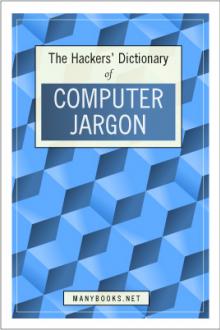

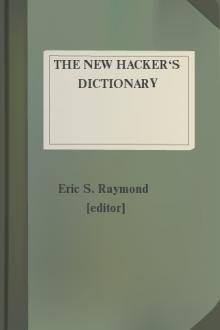
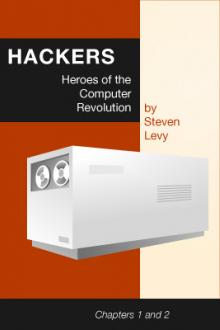
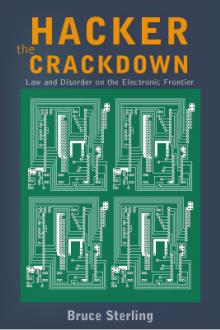
Comments (0)